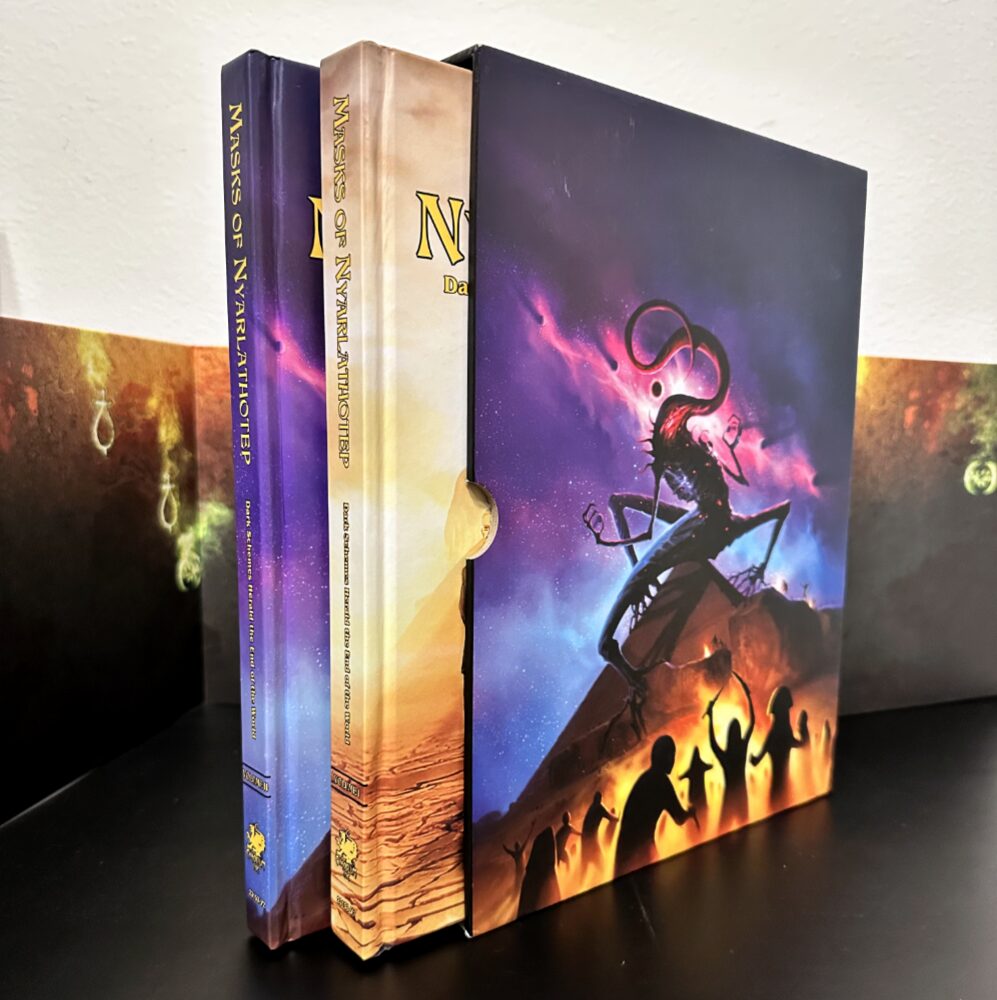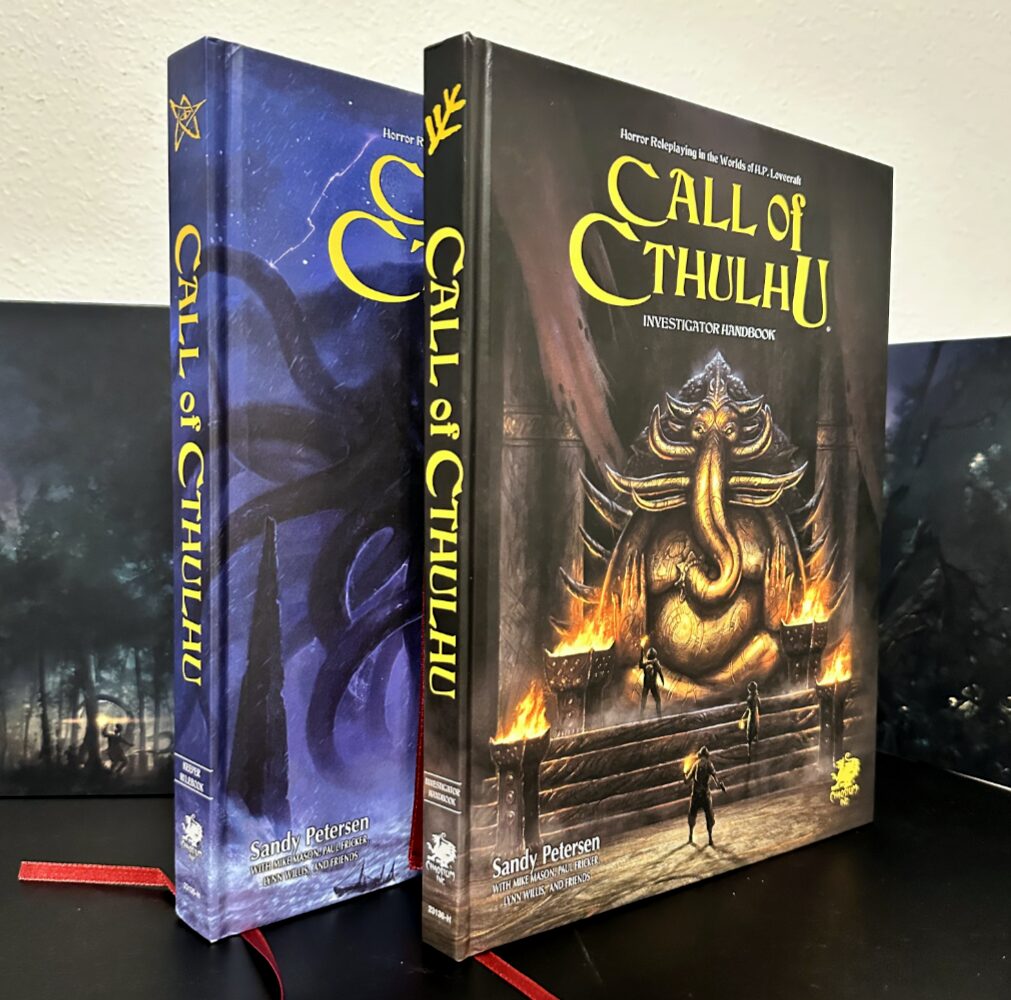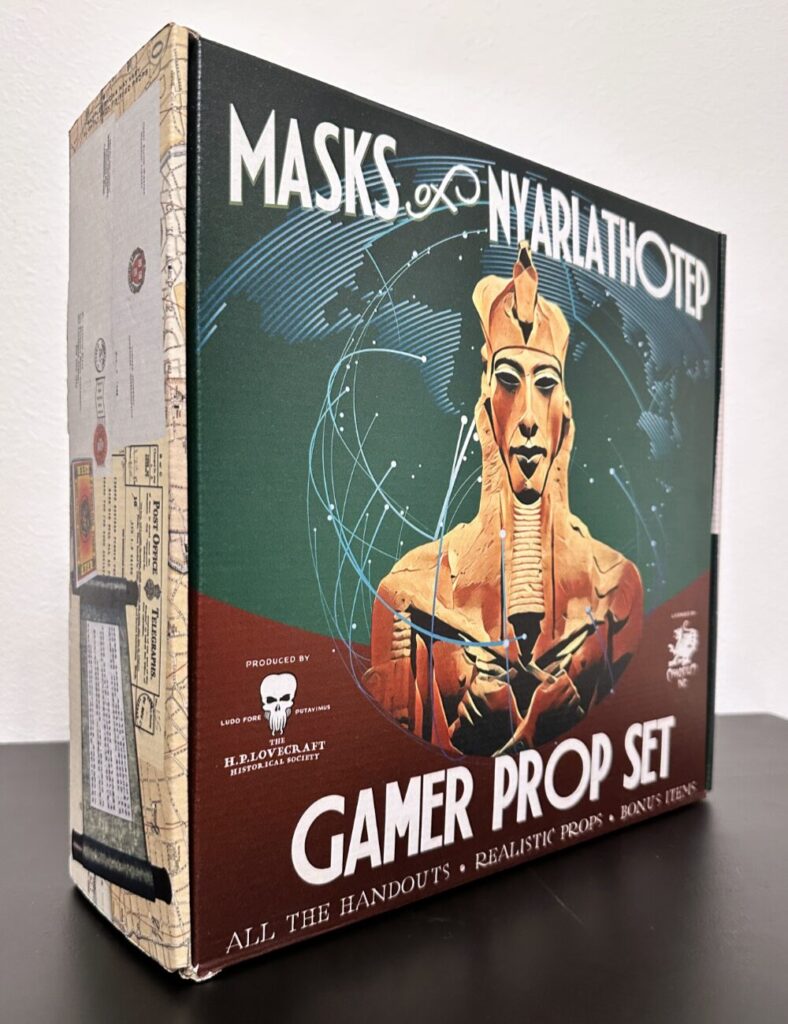I started running the 1984 archetypal Call of Cthulhu campaign, Masks of Nyarlathotep. The version we’re playing is the 2014 “remaster”, the fifth edition, written for the current 7th edition ruleset, which adds a whole introductory adventure and generally tidies up things.

Call of Cthulhu, 7th edition
We have played a lot of Call of Cthulhu, 5.1 edition, from 1993. The game system has changed remarkably little since the 1981 original, with the seventh edition bringing the most sweeping changes, if we ignore the d20 version in 2002. I was curious to see how my group and myself would take to it, as we’re now very used to story games, and this sort of “how would it work in real life”, simulationist approach feels decidedly yesteryear.
Getting into character creation, we were frankly shocked. Aside from the archaic, very cumbersome and out of place automatic gunfire rules, the character creation is where the age of the underlying system shows the most. You’ll be juggling several very large point pools and buying dozens of skills, percentage point by percentage point. There is multiplication, cross referencing tables, calculating half and fifth values of skills, and so forth – it’s a lot, and for a contemporary player without a history of these games from the 80s-90s, will seem odd.
Once you get through the character creation, the rules do not get in the way. The percentage based system is easy to understand for anyone, and doesn’t really feel that old. The only concession to more recent developments in tabletop roleplaying game design is the concept of pushing your rolls (adding risk, getting to roll again).
Compared to my beloved 5.1 edition, there are much more comprehensive rules for studying arcane tomes. I like this a lot as it gives playable detail to something that used to be handwaved. There are also rules for running chases both on foot and in vehicles, which read usable.
The new character options are very welcome – you can start characters as already meddling with knowledge they shouldn’t have, and the just concluded world war is noted in character options and traumas they begin the game with.
All the historical detail in the player’s guide is useful for getting ready to play in the early 1900s, though, and very well presented. The details are things you can use at the table. I’m still not quite sure this needed to be two separate books: with a tight edit, I think it would’ve worked better as one big book.

Gamer Prop Set by HPLHS
That’s “H. P. Lovecraft Historical Society”. They are a group of Lovecraft fans that’s been around since 1986. Among other things, they make noteworthy audio dramas and motion pictures about the Lovecraft stories, as well as physical props to make the fiction come to life.
The “Gamer Prop Set” is a set of documents created to replace the handouts that come with the campaign. Most of the things in the box you already get as part of the campaign set, but these are deluxe versions of all that – things you can give the players, who can pretend that they are the period accurate items their characters are handling within the fiction. The maps are a particular highlight.
In addition to all the documents, you also get atmospheric audio items for key moments.
I am exceedingly pleased by these items, and can’t wait to give them to my players. I can’t recommend this enough.

Soundscape by Syrinscape
I almost gave this a pass because the Syrinscape website and app are not very polished, and the price seemed high to me.
I gave it a go with the intro chapter, and if you’re at all into using scene specific audio in your run of Masks of Nyarlathotep, you need this. The quality is wonderful, and you get so many options to fine tune the experience.
Actively managing audio while running the game takes some practice, but what you usually do is just hit play on the scene specific audio. I always take a look (listen) in advance as there might be elements of the soundscape that you want to emphasize (for example, the buzzing of flies), and elements you might feel are distracting (for example, footsteps). The only tricky thing is to keep this in mind if you’re suddenly cutting to a different scene, or the scene changes in a way you didn’t anticipate. Usually in those situations the players are so invested anyway that they won’t notice a possible disconnect with the ambiance.
The benefit of a carefully curated soundscape is major help in immersing the table in the scene.
The campaign proper: Peru, 1921
The campaign clearly benefits from decades of play and publishing experience. While running any prewritten campaign can be a lot of work, these books make that as easy as possible. Initially, I am especially impressed by how well the foreign environment of Peru in 1921 is set. The details are really well chosen and presented.
The adventure starts in Lima, Peru, in 1921. Without going into any spoiler territory, I want to share my findings after a couple of sessions.
We took things much slower than intended. We only got through the introductory dinner in the first session, because we started play on the ship, en route to Lima from the United States. This gave us time to explore the characters and establish group dynamics before things started to get weird. The adventure recommends starting things at the dinner. I can’t imagine doing that.
This was intentional from me, as I find that the investigative play style is just not very interesting to me unless we understand what the characters are going through, and build on that drama. Now we have a group of very dysfunctional people, and I can’t wait to see how they deal with everything they’re going to encounter in the game – if they make it that far.
After a series of different kinds of mostly “story” games, and quite a bit of Dungeons & Dragons, it feels refreshing to dive into an old school system and slow things down for an investigative drama. My players, and hopefully myself, are better at playing this sort of thing than we used to be, decades ago when I first played Cthulhu, and I feel privileged to be able to go back and rekindle that fire. All that character driven experience from other games has made us better players, and I believe the campaign will reap the benefits of that.
I am very excited to continue the campaign this year.
Leave a Reply